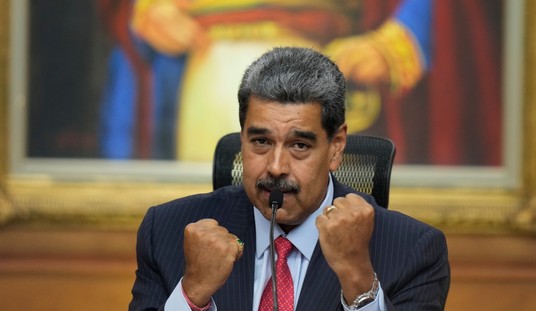If you’re coming to this fresh, you’ll be lost. If you watched Tucker Carlson talk about it last night, you’ll be better prepared. And if you read this magisterial analysis by science writer Nicholas Wade a few days ago, you’ll be really prepared. I’ll sum up as best I can: The NIH, which Fauci’s agency is a part of, has given grants in the past to a nonprofit called EcoHealth Alliance, which hunts emerging viruses. Among the places where they do research is China. Of the $3.7 million EcoHealth received from NIH before 2019, $76,000 per year was given to — ta da — the Wuhan Institute of Virology for its research on bat viruses.
So, while it’s apparently true that the Wuhan lab didn’t receive money *directly* from NIH, some of NIH’s money ended up in their coffers via EcoHealth Alliance as the middleman.
The head of EcoHealth has spoken on record before about Wuhan scientists tinkering with the genome of bat viruses they harvest. The point of the tinkering in theory is that, by making the viruses more infectious to humans in the lab, scientists can see how viruses might mutate into something dangerous out in the wild. Then they can start producing therapies and vaccines to treat them now, before they cause a pandemic. They’re trying to get ahead of natural evolution in a laboratory setting, in other words, and anticipate how a dangerous pathogen might be suppressed. The problem is, by tinkering, they’re creating precisely the sort of virus that could cause a pandemic if it escaped the lab.
That’s called “gain of function” research and it’s controversial for obvious reasons. Wade pointed out that the Wuhan Institute’s lead scientist had American help with her work in the past:
Dr. Shi then teamed up with Ralph S. Baric, an eminent coronavirus researcher at the University of North Carolina. Their work focused on enhancing the ability of bat viruses to attack humans so as to “examine the emergence potential (that is, the potential to infect humans) of circulating bat CoVs [coronaviruses].” In pursuit of this aim, in November 2015 they created a novel virus by taking the backbone of the SARS1 virus and replacing its spike protein with one from a bat virus (known as SHC014-CoV). This manufactured virus was able to infect the cells of the human airway, at least when tested against a lab culture of such cells.
The SHC014-CoV/SARS1 virus is known as a chimera because its genome contains genetic material from two strains of virus. If the SARS2 virus were to have been cooked up in Dr. Shi’s lab, then its direct prototype would have been the SHC014-CoV/SARS1 chimera, the potential danger of which concerned many observers and prompted intense discussion.
As we all know by now, says Wade, the chimera created by Shi and Baric didn’t lead to any vaccines or treatments that stopped SARS-CoV-2 in its tracks. On the contrary, it’s possible that the chimera caused SARS-CoV-2. “No one has found the bat population that was the source of SARS2, if indeed it ever infected bats,” Wade wrote in proposing that the lab-escape theory makes more sense than natural emergence of the virus. “No intermediate host has presented itself, despite an intensive search by Chinese authorities that included the testing of 80,000 animals. There is no evidence of the virus making multiple independent jumps from its intermediate host to people, as both the SARS1 and MERS viruses did. There is no evidence from hospital surveillance records of the epidemic gathering strength in the population as the virus evolved. There is no explanation of why a natural epidemic should break out in Wuhan and nowhere else.”
Gain-of-function research is so exceptionally dangerous that the NIH’s grant to EcoHealth Alliance specifically barred use of the funds to support it from 2014 to 2017 — unless the “head of the USG funding agency determines that the research is urgently necessary to protect the public health or national security.” Did Fauci give the go-ahead to EcoHealth Alliance to pursue the research under that loophole? Or did his boss, Francis Collins? Or did EcoHealth Alliance misuse the money?
There’s no smoking gun here. We don’t know if SARS-CoV-2 escaped from a lab, we don’t know if the NIH money was instrumental in its gain-of-function research, we don’t know if Fauci approved the funding or if EcoHealth Alliance violated the terms of its grant. But Fauci seems to have no good answers in this exchange with Paul apart from insisting that NIH has never funded the Wuhan Institute of Virology. No one’s saying that they did, though; the allegation is that they funded EcoHealth Alliance and EcoHealth then redirected some of the money to Wuhan to fund gain-of-function which may or may not have produced and accidentally released the virus that causes COVID.
.@RandPaul: "Dr. Fauci, do you still support…NIH funding of the lab in Wuhan?"
Dr. Anthony Fauci: "Senator Paul, with all due respect, you are entirely and completely incorrect…"
Full video: https://t.co/ILTKlTSQdC pic.twitter.com/t0HxwsWXmm
— CSPAN (@cspan) May 11, 2021








Join the conversation as a VIP Member